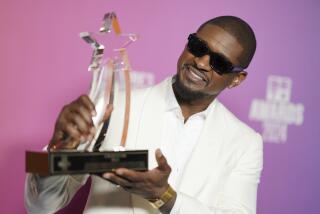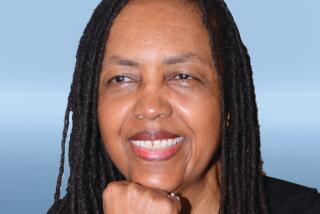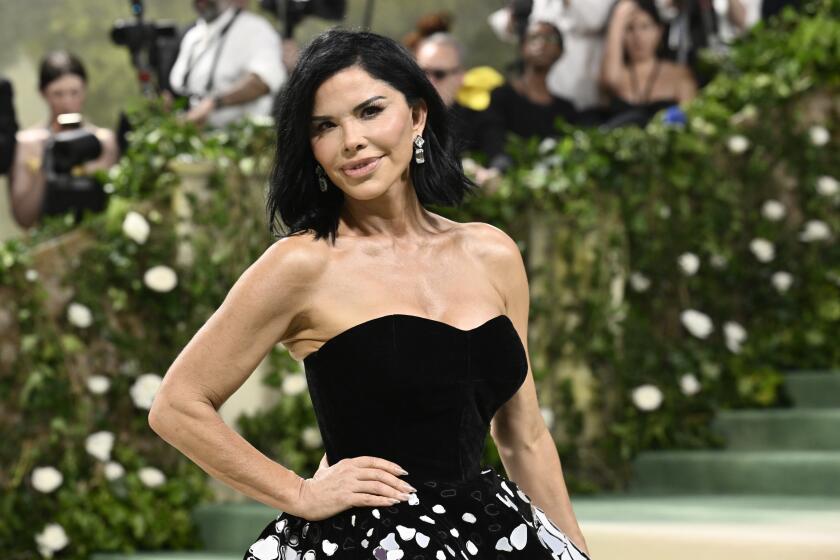From Harlem, history and hope
HAD his ambition to become a professional basketball player not panned out, Kareem Abdul-Jabbar says, he would have been a history teacher instead. His passion for African American history in particular inspired his latest book, “On the Shoulders of Giants,” borrowing from the Isaac Newton quote crediting those who inspired him.
Born in Harlem in 1947, Abdul-Jabbar grew up loving basketball and jazz -- the latter thanks to his father, a Juilliard-trained musician who exposed him to the many great players who emerged in the Harlem Renaissance, the flowering of African American culture that took place after World War I. In this book, he tells how his path to becoming one of the greatest centers in basketball history was shaped by the giants of Harlem culture and thought.
The book, cowritten with novelist and Orange Coast College professor Raymond Obstfeld, is organized in a call-and-response format, not unlike the oral tradition in West African cultures. It offers mini history lessons about Harlem followed by Abdul-Jabbar’s personal narratives detailing aspects of the renaissance he found especially important. These prove him to be a serious history buff.
Between 1920 and 1940, some of the country’s greatest painters (Jacob Lawrence, Romare Bearden), musicians (Duke Ellington, Louis Armstrong), writers (Langston Hughes, Zora Neale Hurston) and actors (Paul Robeson, Charles Gilpin) worked and converged in this 2-square-mile section of New York City, yielding a revolution as much as a renaissance. Abdul-Jabbar traces the great northward migration of African Americans that took place because of Jim Crow laws in the South as well as the need for workers during World War I. Those who were drawn to New York found refuge in Harlem, although Abdul-Jabbar argues that there was no sense of unity there. That would be “Disney stereotyping,” he writes. “In fact, adversity sometimes turned Harlemites against each other.... Racism and regionalism of blacks against blacks threatened to destroy the community from within.”
It was a place where people worked hard, struggled to pay bills, went to church and raised children. This was not “white America’s romanticized ideal of happy black folk singing away their worries,” he writes, but a neighborhood with real and intractable problems that was ignored by the city’s white politicians. “The people I write about fought and struggled and suffered, and I want all that to count for something. I want their history to inform and excite and inspire the reader. As it did me.”
The overcrowded Harlem that Abdul-Jabbar was born into had little resemblance to the neighborhood in its glamorous era -- aside from its enduring African American population. And his family moved to the Dyckman Street projects in northern Manhattan when he was 3. But as a teenager in the early 1960s, he joined a city-sponsored Harlem youth program that immersed kids in black history. It changed his life: He read as much as he could about the area, and he worked on a weekly newspaper operating out of the Harlem YMCA and reporting on local goings-on. (With his press credentials, the eager 17-year-old got to interview the Rev. Martin Luther King Jr. after a speech.) Although he left for UCLA at 18, his attachment to Harlem and the ideas he learned there remain deeply personal.
His reading of Malcolm X’s autobiography proved profoundly influential, as were the writings of other black activists. Ultimately, he dropped his birth name, Lew Alcindor, which signified to him white perceptions of who he should be, choosing Kareem (“generous”) Abdul (“servant of Allah”) Jabbar (“powerful”). “I can trace the genealogy of my change in name -- and change in heart -- directly to the Harlem Renaissance,” he writes.
This is an ambitious book, to say the least. Abdul-Jabbar covers a great deal of territory and honors the writers, jazz musicians and towering intellectuals who shaped his thinking, his pride and his sense of social justice. “Miles Davis taught me how to be cool, or at least to think I was cool, as a gawky, towering teen.” He eventually met his idol, who commented dryly that a guy Abdul-Jabbar’s size would probably have to shell out $500 to have a necktie made. Jazz, he writes, made him a better athlete by helping him perfect his footwork on the court because it “has a unique combination of being explosive yet controlled, measured yet unpredictable.”
He even reflects on the history of professional basketball, noting that black players were banned until after World War II. The 7-foot-2 author reveals that his career, however enviable, was not wholly fulfilling in itself: “If the pinnacle of my influence as a human being was perfecting the skyhook, I would not feel very satisfied,” he writes. “[T]he occupation I feel most defines all the aspects of who I am at this time in my life is writer.”
Abdul-Jabbar’s deep feeling for Harlem’s history is admirable, as is the breadth of his knowledge. If you can ignore the occasional descent into cliches and banality (“most important of all, sing, dance, and laugh”), “On the Shoulders of Giants” is edifying, vibrant and inspiring.
*
Carmela Ciuraru is the editor of six anthologies of poetry, including “Beat Poets” and “First Loves.”
More to Read
Sign up for our Book Club newsletter
Get the latest news, events and more from the Los Angeles Times Book Club, and help us get L.A. reading and talking.
You may occasionally receive promotional content from the Los Angeles Times.







